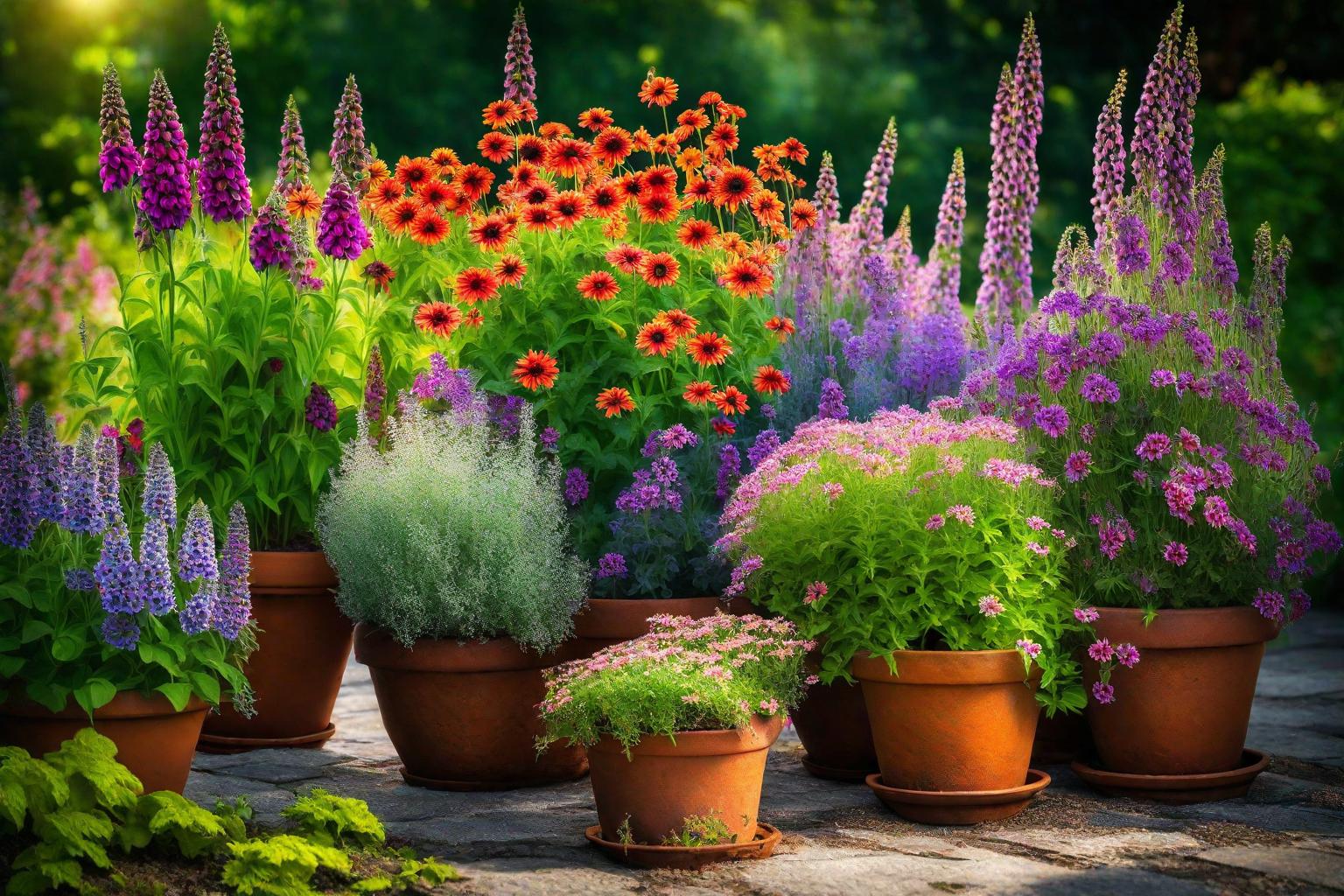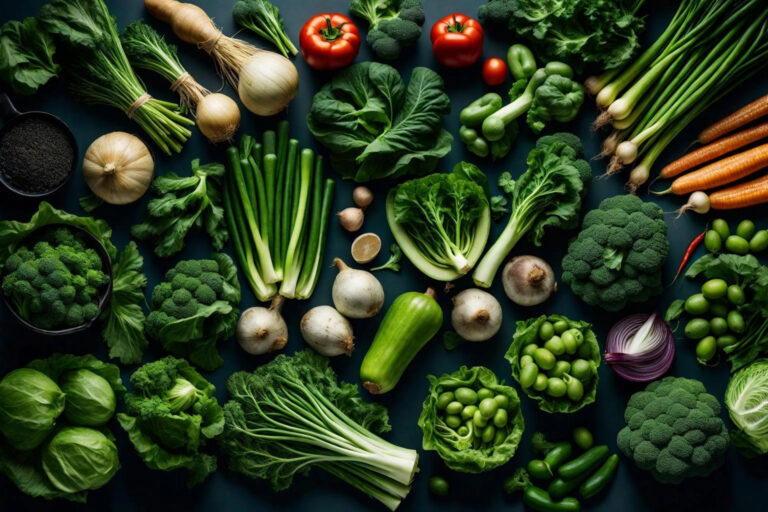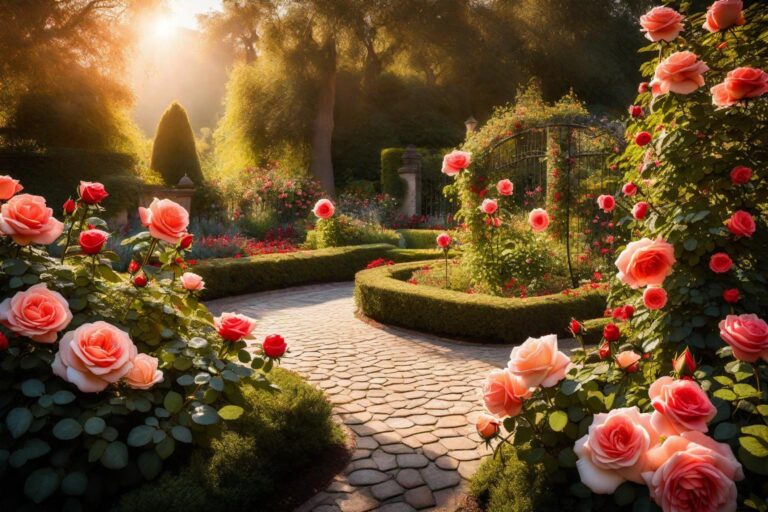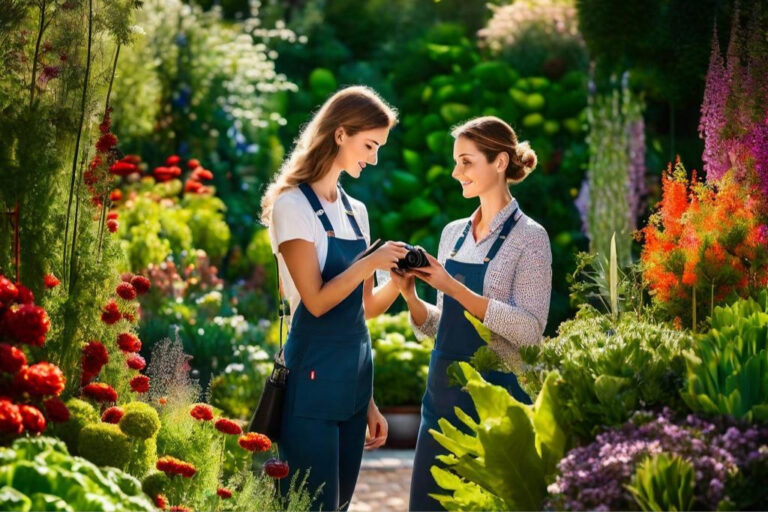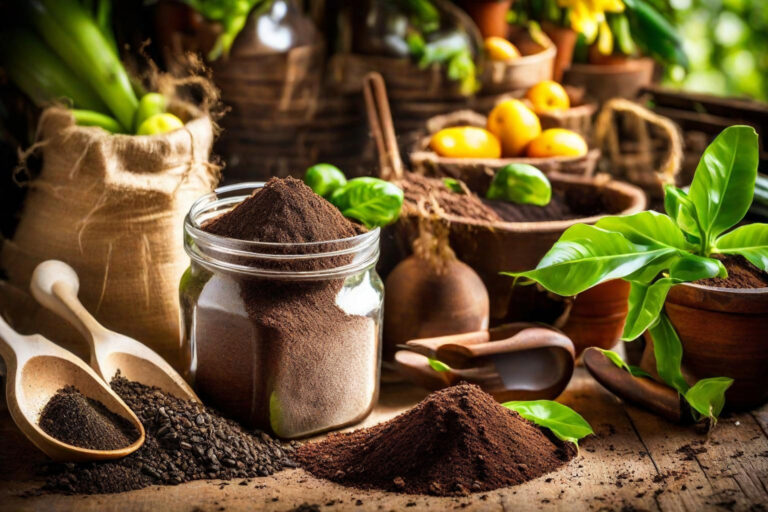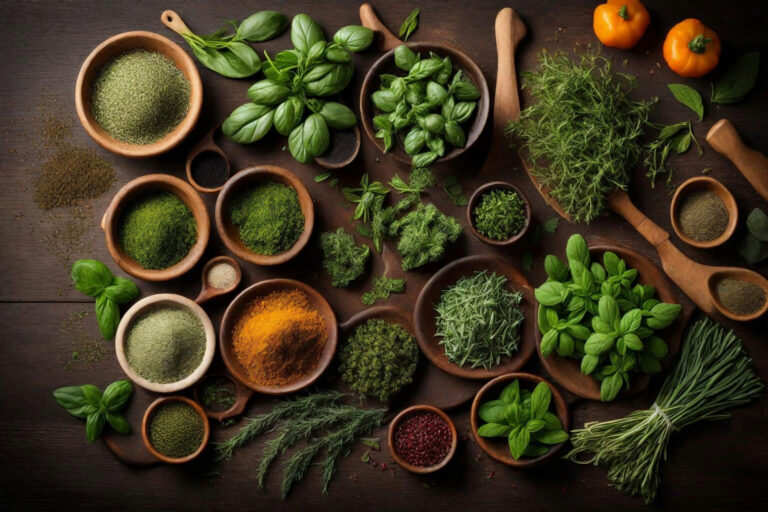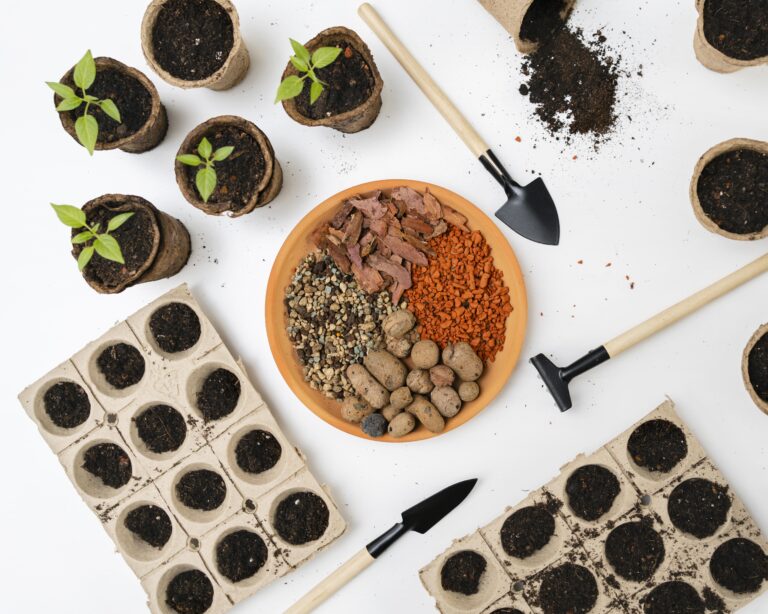10 best perennial plants for pots
“Discover the ultimate guide to cultivating best perennial plants for pots! Explore the best varieties, pot selection tips, soil mixes, care routines, and more for thriving container gardens. Unveil the beauty of potted perennials effortlessly.”
Defining Perennial Plants:
Perennial plants are a category of plants characterized by their ability to live for more than two years, often flowering and producing seeds multiple times throughout their lifespan. Unlike annuals, which complete their life cycle within a single growing season, and biennials, which require two growing seasons, perennials persist for several years. These plants have the capacity to endure various environmental conditions and typically go through periods of dormancy during unfavorable seasons, only to re-emerge and bloom when conditions are favorable again. The diverse world of perennials encompasses a wide range of flowering and non-flowering species, contributing to the longevity and biodiversity of ecosystems and gardens alike.
Key factors to consider before choosing perennial plants:
Embarking on the journey of selecting best perennial plants for pots involves thoughtful consideration of various factors. Let’s delve into the key elements that can make or break the success of your potted garden:
1. Size of the Pot: The pot serves as the stage for your perennial’s performance, and getting the size right is crucial. Consider the potential growth of your chosen plant. Opt for a pot that provides ample space for the roots to spread and the plant to flourish. A well-proportioned pot ensures a happy, thriving perennial.
2. Sunlight Requirements: Plants, like us, have their preferences when it comes to sunlight. Some crave the full, warm embrace of the sun, while others prefer a more shaded existence. Before making your selection, understand the sunlight requirements of your chosen perennials. This knowledge ensures you place your pots strategically, maximizing exposure to the sunlight that suits each plant best.
3. Watering Needs: Water is the elixir of life for plants, and each perennial has its own hydration preferences. Some like it consistently moist, while others prefer drier intervals between watering. Familiarize yourself with the watering needs of your chosen perennials to avoid drowning or dehydrating your plants. Striking the right balance ensures a happy and healthy potted garden.
Best perennial plants for pots
Perennial plants are the garden superheroes that don’t just bloom for a season; they’re the evergreen stars that return year after year. These green wonders have mastered the art of longevity, gracing your garden with their presence and adding a touch of elegance that evolves with time. There are following best perennial plants for pots
Lavender
Lavender, with its intoxicating fragrance and delicate blooms, stands as a perennial favorite in gardens worldwide. Its slender stems adorned with clusters of purple, blue, or white flowers exude a captivating charm. This aromatic herb not only pleases the eyes but also tantalizes the senses with its calming scent, making it a beloved choice for both gardeners and nature enthusiasts.
Pot Requirements and Care Tips:
When potting lavender, ensure the container offers excellent drainage to prevent waterlogging, as this plant detests soggy roots. Opt for a pot with a gritty, well-draining soil mix—think sandy or gravelly soil—to mimic its natural Mediterranean habitat.
Place your lavender in a spot that basks in full sunlight for at least six hours a day, encouraging its signature scent and vibrant blooms. Regular watering is essential, but remember, lavenders prefer drier soil between watering sessions to prevent root rot. Prune faded flowers to encourage continuous blooming and trim the plant in early spring to maintain its bushy, compact form.
Lavender’s low-maintenance nature makes it a delightful addition to any pot garden, rewarding you with not just beauty but also a touch of tranquility in your outdoor oasis.
Coreopsis
Coreopsis, commonly known as “tickseed,” is a vibrant and versatile perennial that adds a splash of sunshine to any garden. This cheerful plant boasts daisy-like flowers in various shades of yellow, red, pink, and even bi-colors. Its blooms, resembling miniature suns, bring a burst of color and joy to your outdoor space, attracting butterflies and pollinators.
Coreopsis is a hardy plant, thriving in various soil conditions and climates. Its long blooming period from late spring to fall makes it a star performer, ensuring a prolonged display of vivid hues in your garden.
Best Practices for Potting and Care:
When potting Coreopsis, opt for a container with adequate drainage holes to prevent waterlogging, as these plants dislike sitting in water. Use well-draining soil enriched with organic matter to ensure optimal growth.
Ensure your Coreopsis receives ample sunlight, ideally six to eight hours a day, to stimulate its robust flowering habit. Regular watering is essential, especially during dry spells, but avoid overwatering to prevent root rot. Deadhead spent blooms to encourage continuous flowering and maintain the plant’s vitality.
Pruning back the plant by a third after the first bloom cycle can promote a second flush of flowers, extending its colorful display throughout the growing season. Coreopsis’s adaptability and easy-going nature make it a perfect choice for pots, adding a vibrant touch to your garden with minimal effort.
Sedum
Sedum, often termed as “stonecrop,” is a fascinating and resilient plant celebrated for its versatility and endurance. Its succulent leaves come in a myriad of shapes and colors, ranging from vibrant greens to striking purples and reds. These hardy leaves store water, enabling the plant to thrive in challenging conditions, including dry spells and poor soils.
This low-growing perennial is not just visually appealing; it also attracts pollinators with its clusters of star-shaped flowers that adorn the plant in late summer and fall. Sedums are tough, adaptable, and a go-to choice for gardeners seeking a plant that thrives with minimal fuss.
Potting Recommendations and Maintenance:
When potting Sedum, prioritize a container with excellent drainage to prevent water stagnation. Use a well-draining soil mix, preferably sandy or gravelly, to mimic its natural habitat. Sedums are lovers of sunlight, so position the pot in a spot that receives at least six hours of sunlight a day.
As for care, Sedums are remarkably low-maintenance. Water them sparingly, as they are drought-tolerant once established. In fact, they prefer slightly dry soil between watering. Avoid excessive moisture, as this can lead to root rot. Pruning back the plant in early spring can encourage compact growth and robust flowering.
Sedums’ combination of charm and hardiness makes them a delightful addition to pots, thriving effortlessly and adding visual interest to any garden space.
Astilbe
Astilbe are elegant, feathery plumes that bring grace and beauty to shaded gardens. These perennial flowering plants boast clusters of tiny, star-shaped flowers that sit atop slender, fern-like foliage. Available in various shades of pink, white, red, and lavender, Astilbe infuse shaded areas with bursts of color and sophistication.
One of their notable traits is their love for shade. Unlike many flowering plants, Astilbe thrive in partially shaded to fully shaded areas, making them ideal for brightening up garden corners that lack direct sunlight. They also enjoy moisture-retentive soil, thriving near water features or in areas with consistent moisture.
Shade-Friendly Potting Instructions:
When potting Astilbe, opt for a container that allows for proper drainage while retaining moisture. Use a well-draining soil mix enriched with organic matter to create a moist yet well-aerated environment for the plant.
Choose a shaded spot for your Astilbe pot, ensuring it receives filtered sunlight or dappled shade throughout the day. Avoid direct afternoon sun, as it can scorch the delicate foliage. Keep the soil consistently moist, especially during dry spells, but avoid waterlogging, which can lead to root rot.
With their graceful appearance and preference for shaded environments, Astilbe add a touch of elegance to shaded areas, bringing color and charm to spaces often overlooked in garden designs.
Salvia
Salvia, commonly known as sage, is a vibrant and versatile perennial herb celebrated for its striking flowers and aromatic foliage. This plant boasts an array of colors, from rich blues and purples to vivid reds and pinks, adorning gardens with its eye-catching blooms. Salvia’s tubular flowers are a magnet for pollinators, attracting bees, butterflies, and hummingbirds.
Aside from its visual appeal, Salvia offers a myriad of varieties, each with its unique fragrance and culinary or medicinal uses. It’s a resilient plant, thriving in various climates and soil types, making it a favorite among gardeners seeking enduring beauty.
Tips for Potting and Nurturing:
When potting Salvia, choose a container that provides ample drainage to prevent waterlogging. Use well-draining soil, preferably a mix with good aeration, as Salvia dislikes sitting in overly moist soil.
Position the pot in a spot that receives full sunlight, as Salvia thrives in bright, sunny locations. Water the plant moderately, allowing the soil to dry slightly between watering to prevent root rot. Regular deadheading—removing spent flowers—encourages continuous blooming and maintains the plant’s vigor.
Salvia’s vibrant hues and enduring blooms make it a splendid addition to pots, providing not just visual allure but also attracting a bustling array of beneficial pollinators to your garden space.
Heuchera
Heuchera, also known as coral bells, is a charming perennial admired for its delicate, ornamental foliage and dainty bell-shaped flowers. These plants offer a delightful array of leaf colors, ranging from vibrant greens to deep purples, with some varieties displaying marbled or variegated patterns. The foliage’s hues intensify in cooler weather, adding visual interest to gardens year-round.
Heucheras are not just about their leaves; they produce slender flower spikes adorned with small blooms in shades of pink, red, or white, attracting hummingbirds and pollinators to the garden. These versatile plants thrive in various conditions, from sunny spots to partial shade, making them a versatile choice for container gardens.
Potting Guidelines for Maximum Growth:
When potting Heuchera, prioritize a container with proper drainage to prevent waterlogging, as these plants dislike standing water. Opt for a well-draining soil mix that’s rich in organic matter, ensuring good aeration for the roots.
Position the pot in a location that offers filtered sunlight or partial shade, especially in warmer climates, to protect the delicate foliage from scorching. Water the plant regularly to keep the soil evenly moist but avoid waterlogged conditions. Applying a layer of mulch around the plant helps retain moisture and insulate the roots.
Heucheras’ delicate yet hardy nature makes them a captivating addition to pots, lending a touch of elegance and color diversity to any garden space while offering easy care and striking visual appeal.
Dianthus
Dianthus, also known as pinks or carnations, embodies elegance with its delicate petals and captivating fragrance. These charming perennials boast beautiful, often fringed flowers in shades of pink, red, white, and bi-colors, exuding a sweet, spicy scent that enchants any garden. Their compact, grassy foliage provides a lush backdrop for the stunning blossoms, making them a garden favorite.
Dianthus plants come in various heights and forms, from low-growing ground covers to taller varieties suitable for borders or containers. Their resilience and appealing fragrance make them a popular choice for both ornamental gardens and cut flower arrangements.
Potting Specifics and Care Advice:
When potting Dianthus, select a container with good drainage to prevent waterlogging, as these plants dislike overly wet conditions. Use a well-draining potting mix, preferably slightly alkaline, to mimic their preferred growing environment.
Place the pot in a location that receives full sunlight or partial shade, ensuring they get at least six hours of sun daily. Water your Dianthus moderately, allowing the soil to dry slightly between waterings to prevent root rot. Deadheading spent flowers encourages continuous blooming and promotes the plant’s vigor.
With their elegance and delightful fragrance, Dianthus adds a touch of sophistication to containers, gardens, and even bouquets. Their easy-to-care-for nature and aromatic blooms make them a cherished addition to any garden space.
Peony
Peonies are garden royalty, renowned for their bold, lush blooms and enchanting fragrance. These showstoppers flaunt large, extravagant flowers in an array of hues, from soft pastels to vibrant reds, pinks, and whites. Their voluminous, ruffled petals create a mesmerizing focal point in gardens and floral arrangements, exuding an irresistible charm.
Apart from their stunning appearance, peonies are also valued for their longevity. Once established, these perennials can thrive for decades, gracing gardens with their beauty year after year. They’re adored for their resilience, low maintenance, and the joy they bring as cut flowers, making them a beloved choice among gardeners and florists alike.
Potting Instructions and Care Essentials:
When potting peonies, choose a spacious container with excellent drainage to prevent waterlogging, allowing their deep roots room to grow. Employ a rich, well-draining soil mix, ensuring it’s loose and fertile to accommodate their extensive root system.
Position the pot in a spot that receives ample sunlight, preferably at least six hours daily, to encourage robust flowering. Water peonies deeply but infrequently, allowing the soil to dry between waterings. Mulching around the plant helps retain moisture and insulates the roots during extreme temperatures.
Peonies’ robust nature and flamboyant blooms make them an exquisite addition to pots, gardens, and floral displays. Their longevity, resilience, and captivating beauty contribute to their status as cherished garden treasures.
Rudbeckia
Rudbeckia, commonly known as Black-eyed Susan, is a dynamic and spirited perennial known for its vibrant, daisy-like flowers. These cheerful blooms boast golden-yellow petals with dark centers, radiating warmth and energy in any garden. Their bold colors and contrasting hues create a striking visual impact, attracting butterflies and pollinators to dance among their blossoms.
These resilient perennials bloom from summer through fall, offering extended bursts of color to garden landscapes. Rudbeckia come in various sizes, from compact varieties suitable for pots to taller cultivars perfect for borders or wildflower gardens, adding a touch of wild beauty and vibrancy to outdoor spaces.
Potting Insights for Optimal Results:
When potting Rudbeckia, choose a container that allows proper drainage, preventing water accumulation around the roots. Use a well-draining potting mix, ideally a blend of loam and compost, providing adequate nutrients and good aeration for healthy growth.
Place the pot in a sunny location, as Rudbeckia thrive in full sunlight, soaking up at least six hours of sunshine daily. Water the plant moderately, allowing the soil to dry slightly between watering, as these plants prefer slightly drier conditions. Deadheading spent flowers encourages continuous blooming and promotes a tidy appearance.
Rudbeckia dynamic nature and vibrant blooms make them an eye-catching addition to pots and gardens alike. Their resilience and ability to thrive in various conditions make them a favorite among gardeners seeking lively and enduring garden companions.
Yarrow
Yarrow, with its whimsical appearance and easygoing nature, is a delightful perennial known for its feathery foliage and clusters of tiny, vivid flowers. These charming blooms come in an array of colors, including shades of white, yellow, pink, and red, creating a whimsical tapestry in gardens. Yarrow’s fern-like leaves and flat-topped flower clusters add a touch of grace to any landscape.
Beyond its ornamental appeal, yarrow boasts medicinal properties and is valued for attracting beneficial insects like butterflies and bees. Its adaptability allows it to thrive in various conditions, from dry, sunny spots to moderately moist areas, making it a versatile addition to garden designs.
Potting Tips for Flourishing Growth:
When potting yarrow, choose a container that provides adequate drainage to prevent waterlogged soil. Use well-draining potting mix, preferably a blend of sandy soil and compost, ensuring good drainage and aeration for the plant’s roots.
Position the pot in a sunny location, as yarrow loves sunlight and thrives in bright spots. Water the plant moderately, allowing the soil to dry slightly between watering to prevent root rot. Yarrow’s drought tolerance means it prefers drier conditions, so avoid overwatering.
Yarrow’s whimsical beauty and adaptability make it an easygoing and charming addition to pots and garden landscapes. Its versatility and resilience make it a wonderful choice for gardeners seeking a carefree yet captivating plant for their outdoor spaces.
Innovative Plant Combinations for Visual Appeal
Pairing best perennial plants for pots to create striking displays is an art that combines creativity and thoughtful planning. Here are some tips for harmonious arrangements that captivate the eye:
1. Height and Structure: Create visual interest by combining plants of varying heights and structures. Place taller plants like Peonies or Salvia at the center or back of the pot, surrounded by mid-sized options such as Rudbeckia or Coreopsis, and accentuate with low-growing varieties like Heuchera or Sedum at the edges. This layering adds depth and dimension to your display.
2. Color Coordination: Experiment with color combinations that complement or contrast each other. Pair vibrant blooms like Rudbeckia golden hues with the softer pastels of Dianthus or Astilbe for a striking contrast. Alternatively, create a monochromatic scheme using varying shades of a single color for a harmonious and elegant look.
3. Texture and Foliage: Mix plants with diverse foliage textures to add intrigue. Combine the delicate fronds of Heuchera or Yarrow with the broad leaves of Peonies or the spiky foliage of Salvia. Contrasting textures create a visually stimulating arrangement, even when flowers are not in bloom.
4. Thriller, Filler, Spiller: Follow the “Thriller, Filler, Spiller” concept—incorporate a showy centerpiece (the “Thriller”), surrounded by medium-sized plants that fill the space (the “Filler”), and finally, let trailing or cascading plants spill over the edges (the “Spiller”), creating a balanced and dynamic composition.
5. Consider Growth Habits: Be mindful of plants’ growth habits and their care requirements. Pair plants with similar sunlight and water needs to ensure they thrive together in the same container. Additionally, consider their growth rates to prevent overcrowding as they mature.
Combining perennial plants in pots is a delightful way to create captivating and ever-changing displays. Let your creativity flow, experiment with different combinations, and enjoy the beauty these harmonious arrangements bring to your garden or outdoor spaces.
Conclusion
In the world of gardening, best perennial plants for pots stand as stars, offering enduring beauty and versatility. Perennial plants for pots are like perennial friends, bringing a touch of enduring beauty to your garden canvas. From the aromatic Lavender to the vibrant Coreopsis and resilient Sedum, each plant adds its unique charm. Don’t hesitate to mix and match, creating your own green masterpiece. It’s akin to crafting a living painting – each plant a stroke of color in your garden’s story. So, unleash your creativity, experiment with these green companions, and witness your garden bloom into an everlasting haven of beauty and joy!

